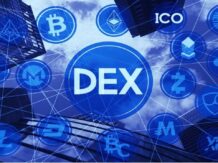Introduction
ADA Cardano, a blockchain platform founded by Ethereum co-founder Charles Hoskinson, has emerged as a leading force in the decentralized space, emphasizing sustainability, scalability, and interoperability. Launched in 2017, Cardano aims to provide a secure and transparent infrastructure for the development of decentralized applications (DApps) and smart contracts. This article explores the foundational aspects of Cardano, its innovative features, and its impact on the broader blockchain landscape.
Introduction to Cardano (ADA)
1. Philosophical Underpinnings:
- Cardano was conceptualized with a strong emphasis on scientific research and peer-reviewed development. Its design philosophy revolves around academic rigor, transparency, and a commitment to creating a blockchain ecosystem that can evolve sustainably.
2. Three Pillars of Cardano:
- Cardano’s development is guided by three core principles: scalability, sustainability, and interoperability. These pillars serve as the foundation for creating a blockchain network capable of addressing current challenges and adapting to future needs.
Innovative Features of Cardano (ADA)
1. Ouroboros Consensus Algorithm:
- Cardano employs the Ouroboros proof-of-stake consensus algorithm, designed to be secure, energy-efficient, and scalable. Ouroboros divides time into epochs and employs a stake-based selection process for slot leaders, reducing the environmental impact associated with traditional proof-of-work mechanisms.
2. Layers of the Cardano Platform:
- Cardano is built on a two-layer architecture: the Cardano Settlement Layer (CSL) and the Cardano Computation Layer (CCL). The CSL handles ADA transactions, while the CCL is dedicated to executing smart contracts and DApps. This separation enhances flexibility, scalability, and security.
3. Plutus Smart Contract Platform:
- Plutus, Cardano’s smart contract platform, utilizes the Haskell programming language. Plutus aims to make smart contract development more secure and accessible by leveraging formal methods and extensive testing.
4. Hydra Scalability Solution:
- Cardano’s Hydra is a scalability solution designed to address the challenge of scaling blockchain networks. It introduces off-chain processing capabilities, allowing the network to handle a high volume of transactions without sacrificing security or decentralization.
Cardano’s Roadmap and Development
1. Phases of Development:
- Cardano’s development is divided into five phases: Byron, Shelley, Goguen, Basho, and Voltaire. Each phase represents a significant milestone in the platform’s evolution, from establishing the foundation to introducing smart contracts and governance features.
2. Community Participation:
- Cardano places a strong emphasis on community involvement and governance. ADA token holders have the ability to participate in decision-making processes through a democratic voting system, ensuring a decentralized and inclusive approach to development.
Cardano in DeFi and Partnerships
1. DeFi Ecosystem:
- Cardano has been actively expanding its presence in the decentralized finance (DeFi) space. Projects such as decentralized exchanges, lending platforms, and stablecoins are emerging within the Cardano ecosystem, providing users with diverse financial services.
2. Strategic Partnerships:
- Cardano has forged strategic partnerships with academic institutions, governments, and industry players. Collaborations with organizations like the Ethiopian government aim to bring blockchain solutions to real-world problems, showcasing Cardano’s commitment to fostering meaningful partnerships.
Challenges and Future Outlook
1. Adoption and Ecosystem Growth:
- Cardano faces the challenge of achieving widespread adoption and fostering a vibrant ecosystem of applications and projects. Continued development and strategic partnerships will be key to overcoming this challenge.
2. Navigating Regulatory Landscape:
- As blockchain technology encounters evolving regulatory landscapes globally, Cardano, like other projects, must navigate regulatory considerations to ensure compliance while maintaining decentralization.
Conclusion
Cardano’s commitment to scientific research, sustainability, and an inclusive development approach positions it as a formidable player in the blockchain space. As it progresses through its development phases and continues to build a robust ecosystem, Cardano showcases the potential for creating a decentralized and sustainable infrastructure that aligns with the evolving needs of the digital economy. The combination of innovative features, community governance, and a focus on real-world applications positions Cardano as a significant contributor to the ongoing evolution of blockchain technology.





